All Roads Lead to Santiago de Compostela
The Camino de Santiago phenomenon has completely taken Spain by storm over the past decade or so. This pilgrimage route originated in the early Middle Ages, fell out of popularity, and only recently has enjoyed newfound popularity with modern-day pilgrims, who are drawn to the trek by religious devotion as much as they are by adventure.
The Camino or “Way of St. James” terminates in Spain’s green northwestern corner, in the rainy city of Santiago de Compostela—the purported burial place of the Apostle St. James. While the most popular route—the French Way—trickles across north-central Spain from the Pyrenees toward the Atlantic coast, there are also around a dozen or so other trails that thread routes across the diverse quilt that is modern Spain.
Some are brief, requiring less than a week on foot—the English Way, for example—while others recall the great overland trips from Roman times—like the Vía de la Plata that starts in Sevilla.
During the three years I spent working in Spain, I managed to pass through every single region in the country except one (Murcia), and in the process I stumbled upon countless segments of the various Caminos (plural) de Santiago that link such far-flung cities as Huesca, Figueres, and Granada with Santiago de Compostela. Read on for a retrospective photo post of nearly every yellow arrow or shell I came across during my travels in Spain.
The most popular route by far starts in the Pyrenees on the French side of the border in Saint-Jean-Pied-de-Port and crosses the mountain range, entering into Spain via the region of Navarra. The first major city along the “French Way” is Pamplona, famous for the Running of theStupid People Bulls every July.
It continues on to Logroño, the capital of Spain’s most famous wine region and a hoppin’ center for pinchos (Basque-style tapas).
Moving west, pilgrims stop at Burgos, the region where the Castilian language was born and the home of the country’s most dazzling Gothic cathedral.
León’s the last outpost on the high central plains and one of the few remaining outposts for the Leonese language.
Ponferrada cozies up amongst the mountainous Bierzo region, where you can step into thatched-roof huts called pallozas and order smoky cured beef and local red wine.
I began my own Camino in the village of Sarria, which makes a good starting point for pilgrims who want to get the official certificate but only have the time and resources to walk the bare minimum of 100 kilometers (62 miles) to get it.
And here’s the marker showing you have just 100 kilometers left on this 800-kilometer-long hike.
Deep in the heart of Galicia, I found this particularly beautiful waymarker outside of Palas de Rei.
Not too far from Santiago, this waymarker translates to “almost,” an encouraging sign for road-weary pilgrims.
Throughout the region of Galicia, but especially closer in toward Santiago, you find these wooden posts with the Galician spelling “Camiño de Santiago” painted in yellow.
Not more than an hour’s hike away from the cathedral, a pilgrim must have gotten so fed up with their hiking boots that they thought they would serve better as flower planters.
Figueres in northeast Spain is famous as the birthplace of Spanish surrealist painter Salvador Dalí, and it also sees one trail of the Catalan Way run through it.
There’s so many routes and side-routes of the Camino de Santiago that often you’ll be surprised to come across a Camino shell while exploring a new city, as I was when I visited the city of Huesca south of the Pyrenees.
Even Madrid has its own Camino! And a sub-route starts out east in the town of Alcalá de Henares, the birthplace of Miguel de Cervantes of Don Quixote fame.
I stumbled across this waymarker on the side of a snazzy hotel in central Madrid, but I have yet to ever come across a pilgrim in the Spanish capital.
“Mozarabic” is a historical term used to describe Christians in Moorish Spain who lived under Muslim rule, which lasted longer in the southern region of Andalucía than anywhere else. So it seems fitting that the various threads of the Camino that begin down here in the south bear this name. I found this ceramic waymarker on the side of a building in Granada, which was the last outpost of the Moorish kings and still the home of the most beautiful palace in the country, the Alhambra.
To the north of Granada is Jaén, capital of Spain’s most-productive olive oil region.
Antequera’s a charming mid-sized town north of Málaga famous for molletes, spongy round bread rolls eaten at breakfast.
Who could forget Córdoba, whose whitewashed old town feels more like a Moroccan medina and whose Mosque-Cathedral has been preserved in all its stunning beauty?
One branch of the Mozarabic Way even continues northwest to the region of Extremadura, where it ends in the capital city of Mérida, bestrewn with Roman ruins.
Often mis-translated as the “Silver Route,” this branch of the Camino actually comes from the Arabic word al-Bilat, meaning “paved,” in reference to the old Roman road that ran from Mérida (Emerita Augusta) north to Astorga (Asturica Augusta). The modern pilgrimage follows this 2,000-year-old trade route and starts in Sevilla, the Andalusian capital.
North of the region of Extremadura, the Paved Way enters Salamanca, where not one but two cathedrals soar over the river and where university students have ruled the roost for centuries.
Lesser-known Zamora, to the north of Salamanca, is a comfortable, authentic Spanish city and a great place to explore Romanesque architecture or observe Holy Week processions during Easter.
The Vía de la Plata continues into Galicia, making a grand entrance at Ourense as pilgrims cross the Miño River on a gigantic medieval arched bridge. Pilgrims can chill out here at thermal springs or chow down on boiled octopus.
The Portuguese Way starts due south of Santiago in the capital of Portugal, Lisbon, and passes through the country’s second-biggest city, Porto.
The Portuguese Way enters Spain via the village of Tui, perched on a hillside that overlooks the Miño River.
There’s even a branch of the Camino in Combarro, a historic fishing village not far from Pontevedra.
The final stage of the Portuguese Way begins in the town of Padrón, known for its sometimes-spicy-sometimes-not peppers and several Galician poets.
Although the Camino officially ends in Santiago de Compostela, the purported burial place of the Apostle St. James, many pilgrims just can’t stop walking and keep on marching west to the sea.
This Camino de Fisterra ends at the lackluster fishing village of Fisterra, but the lighthouse at what the Romans believed was the “End of the World” is pretty cool.
And some pilgrims choose to make a loop out of the whole hike, heading north to the town of Muxía before circling back to Santiago.
In the Middle Ages, pilgrims from England would ride a boat south from the British Isles and land at coastal towns on Galicia’s north Atlantic coast like A Coruña or Ferrol before heading south to Santiago. Ferrol’s got a bad reputation among Galicians (after all, dictator Francisco Franco was born here) but I love its the gridded historic old town and its impressive Holy Week processions.
Most of the English Way passes through nondescript rolling countryside, but a highlight is Betanzos, one of Galicia’s finest villages with several Gothic churches and a reputation for serving up some of the best tortilla or Spanish potato omelet in the country.
Hipster pilgrims eschew the popular French Way for the quieter and more challenging Northern Way that runs along Spain’s northern coast. This waymarker in the Basque city of Bilbao announces the Camino in Spanish and in the Basque language.
Not only does the Northern Way take pilgrims past some of the most stunning scenery in the country, it also stops off in a plethora of top-notch towns, like Llanes on the eastern coast of Asturias.
The Camino de Santiago began in the Dark Ages when the King of Asturias, Alfonso II, journeyed from the Asturian capital of Oviedo to honor the tomb of recently-discovered remains of the Apostle St. James. The Camino Primitivo retraces this “Original Way” the king took from Oviedo to Santiago.
The Original Way passes its halfway point a little before reaching Lugo, whose old town is still completely surrounded by its slate stone walls from Roman times.
But the Camino de Santiago phenomenon isn’t limited just to Spain. Plenty of routes start in southern France and cross the Pyrenees Mountains to join up with Spanish trails. I snapped this photo when I was hanging out in Avignon.
Some very brave pilgrims even hike all the way to Santiago from central Europe—I found this waymarker in Cologne, a major city in eastern Germany.
Have you hiked any of these many Ways of St. James before? Do you keep an eye out for shell markers for the Camino while traveling around Spain and Europe like I do? Comment below in the discussion thread!
The Camino or “Way of St. James” terminates in Spain’s green northwestern corner, in the rainy city of Santiago de Compostela—the purported burial place of the Apostle St. James. While the most popular route—the French Way—trickles across north-central Spain from the Pyrenees toward the Atlantic coast, there are also around a dozen or so other trails that thread routes across the diverse quilt that is modern Spain.
Some are brief, requiring less than a week on foot—the English Way, for example—while others recall the great overland trips from Roman times—like the Vía de la Plata that starts in Sevilla.
During the three years I spent working in Spain, I managed to pass through every single region in the country except one (Murcia), and in the process I stumbled upon countless segments of the various Caminos (plural) de Santiago that link such far-flung cities as Huesca, Figueres, and Granada with Santiago de Compostela. Read on for a retrospective photo post of nearly every yellow arrow or shell I came across during my travels in Spain.
Camino francés — The French Way
 |
| Pamplona |
The most popular route by far starts in the Pyrenees on the French side of the border in Saint-Jean-Pied-de-Port and crosses the mountain range, entering into Spain via the region of Navarra. The first major city along the “French Way” is Pamplona, famous for the Running of the
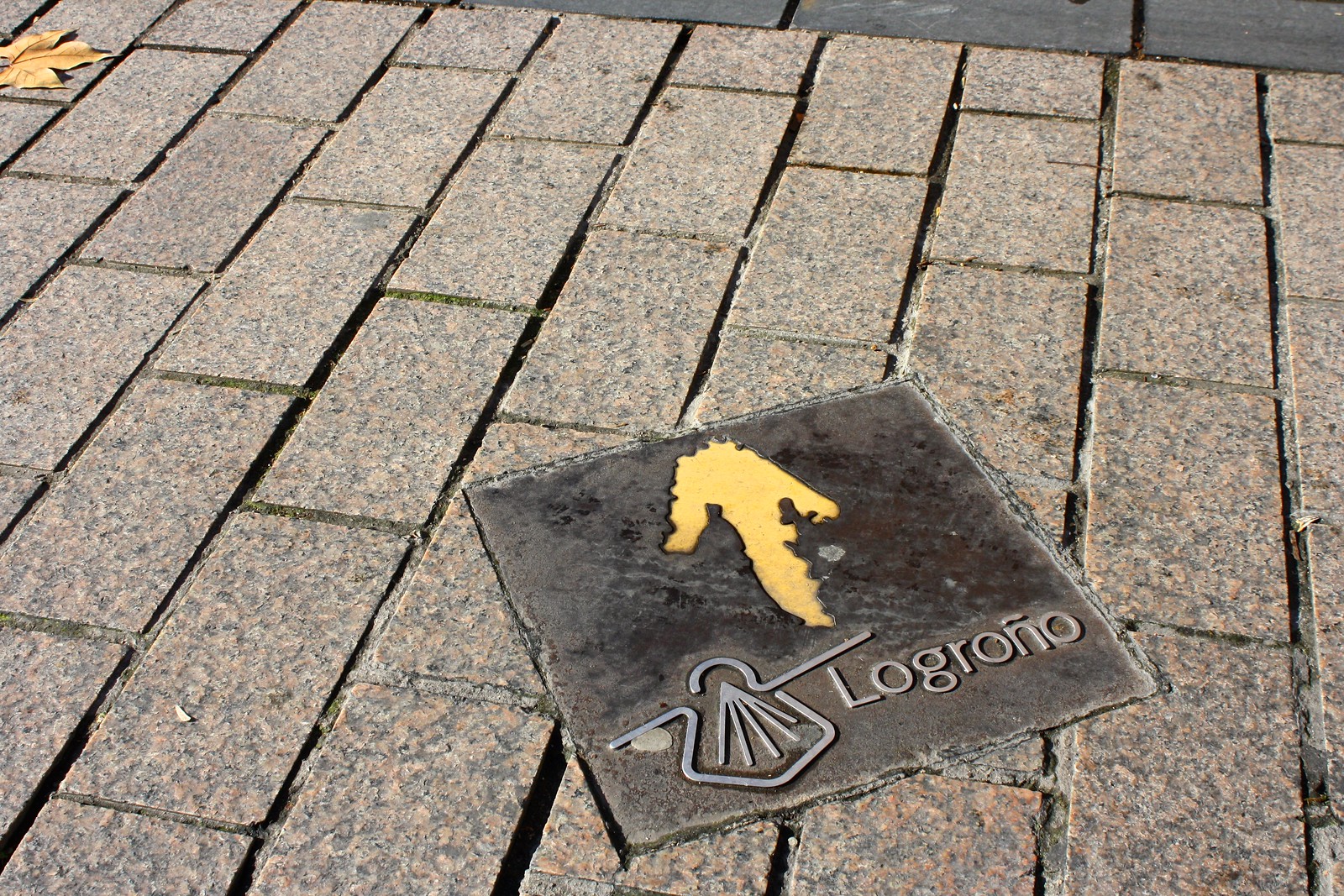 |
| Logroño |
It continues on to Logroño, the capital of Spain’s most famous wine region and a hoppin’ center for pinchos (Basque-style tapas).
 |
| Burgos |
Moving west, pilgrims stop at Burgos, the region where the Castilian language was born and the home of the country’s most dazzling Gothic cathedral.
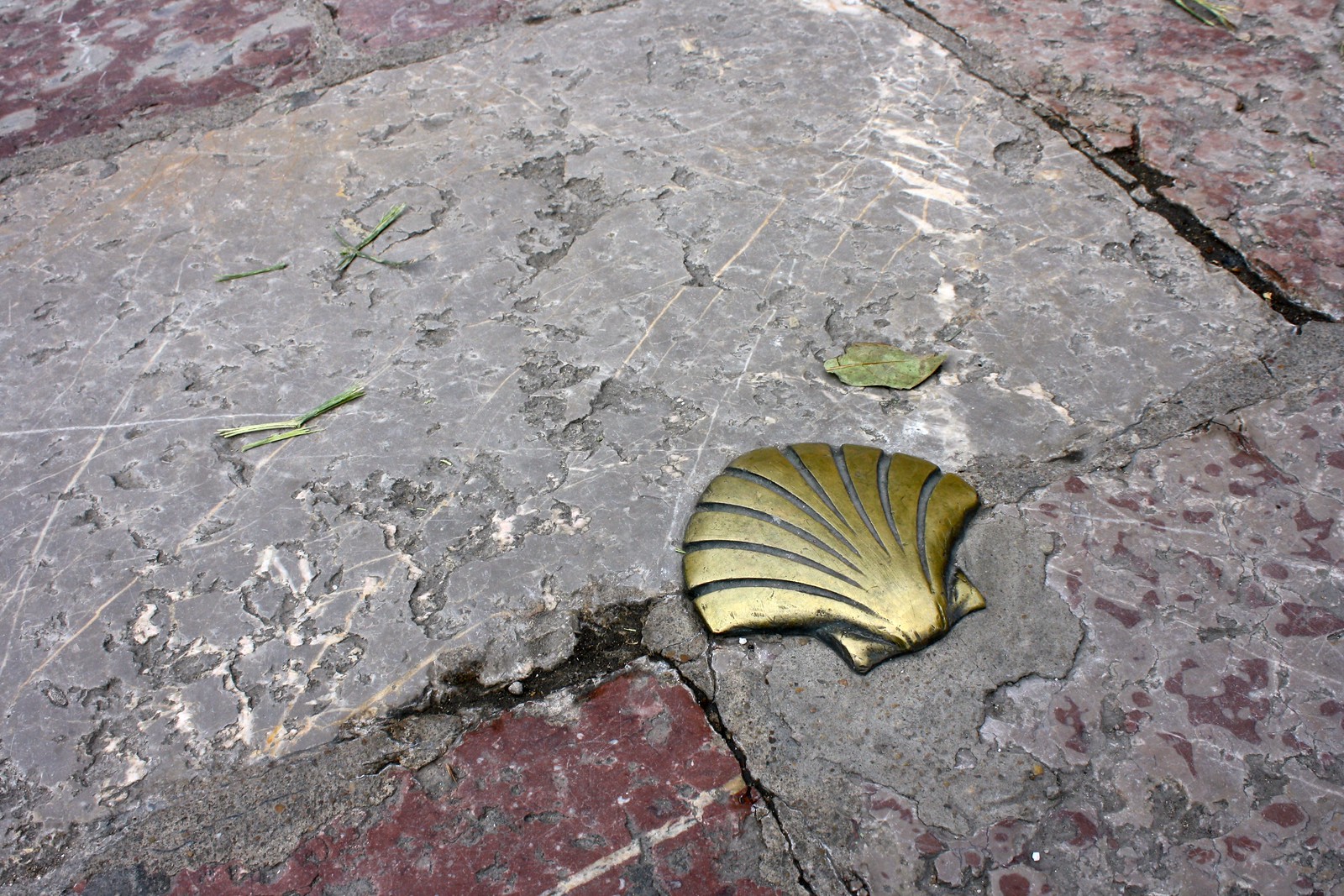 |
| León |
León’s the last outpost on the high central plains and one of the few remaining outposts for the Leonese language.
 |
| Ponferrada |
Ponferrada cozies up amongst the mountainous Bierzo region, where you can step into thatched-roof huts called pallozas and order smoky cured beef and local red wine.
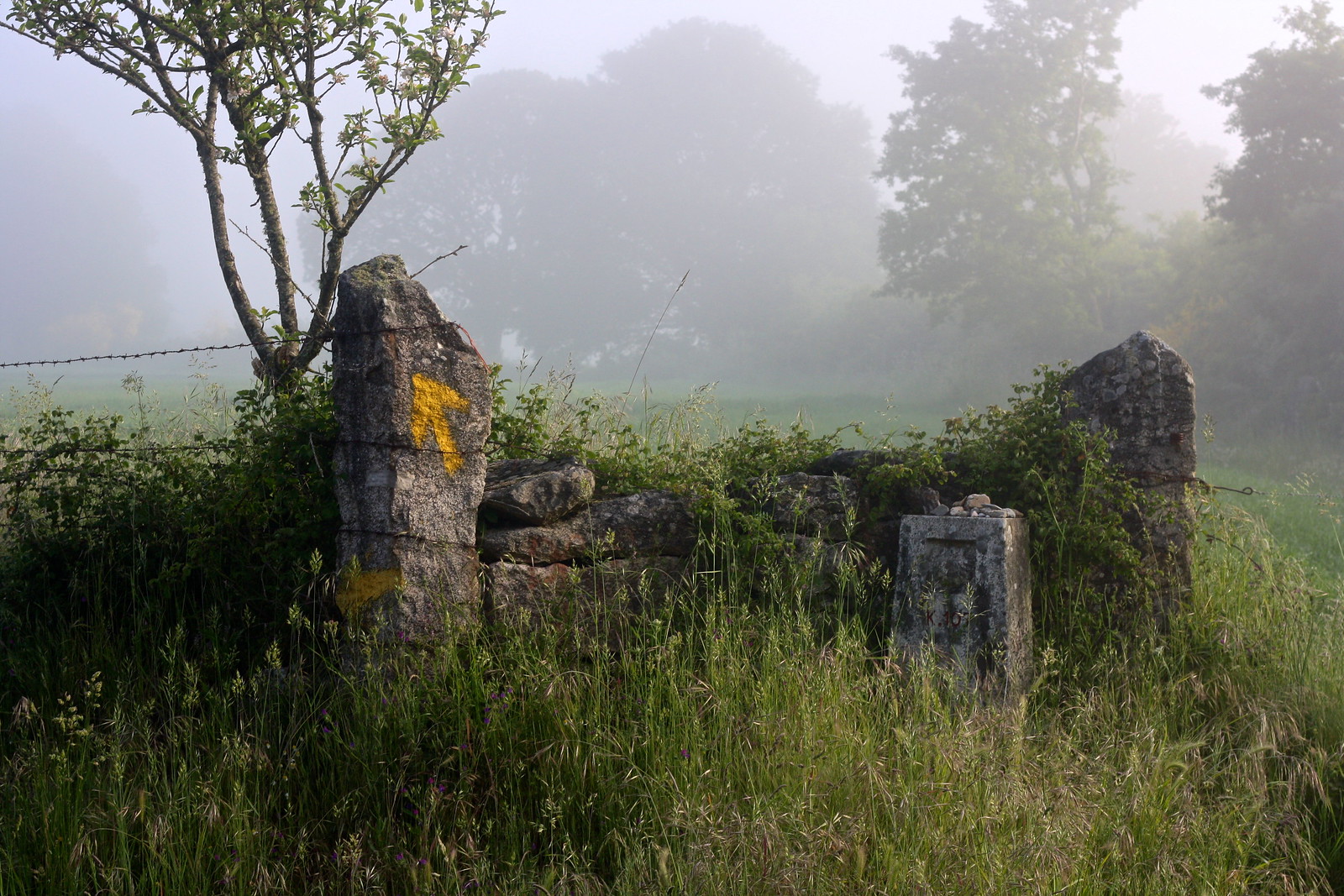 |
| Sarria |
I began my own Camino in the village of Sarria, which makes a good starting point for pilgrims who want to get the official certificate but only have the time and resources to walk the bare minimum of 100 kilometers (62 miles) to get it.
 |
| 100km |
And here’s the marker showing you have just 100 kilometers left on this 800-kilometer-long hike.
 |
| Palas de Rei |
Deep in the heart of Galicia, I found this particularly beautiful waymarker outside of Palas de Rei.
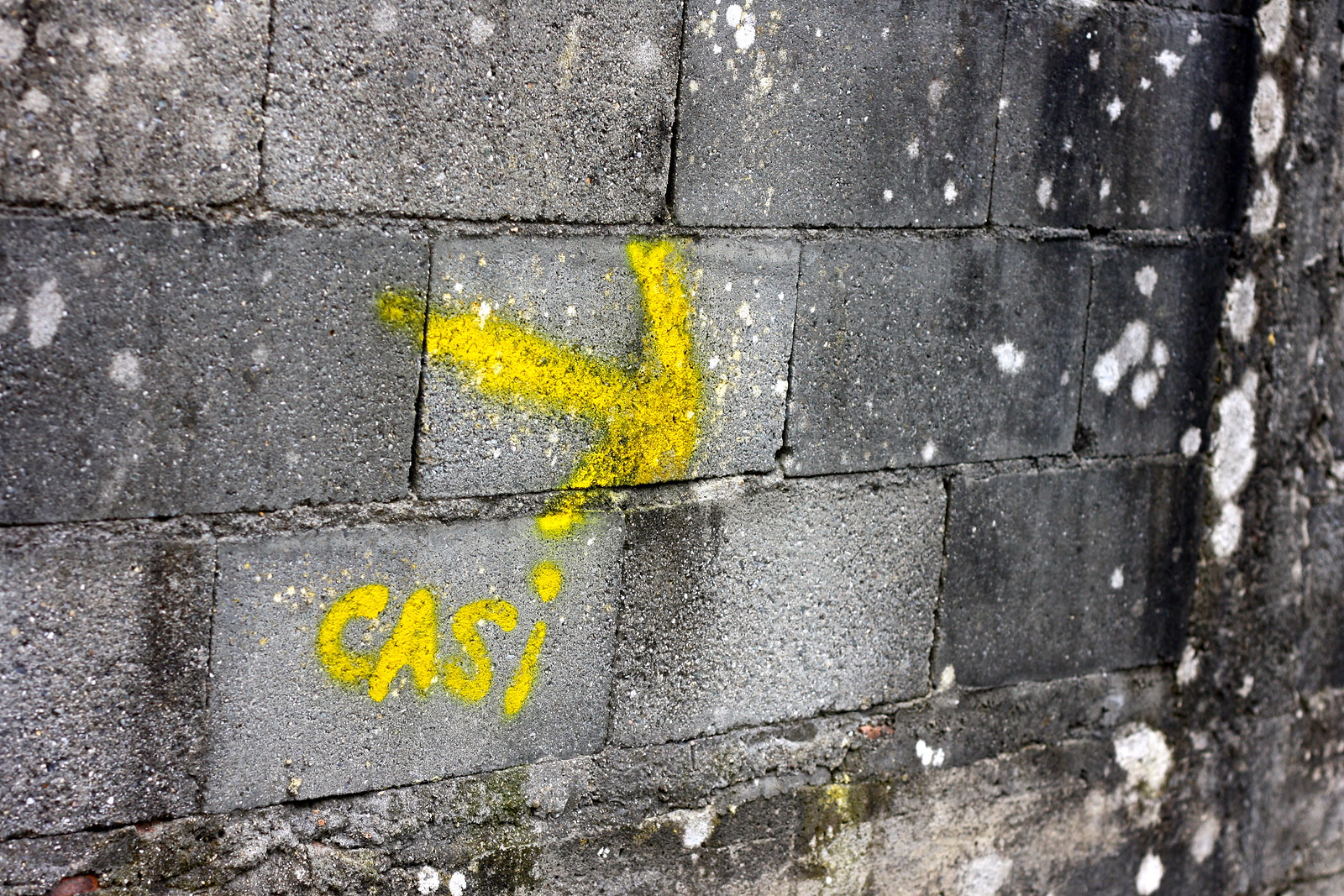 |
| “Almost” |
Not too far from Santiago, this waymarker translates to “almost,” an encouraging sign for road-weary pilgrims.
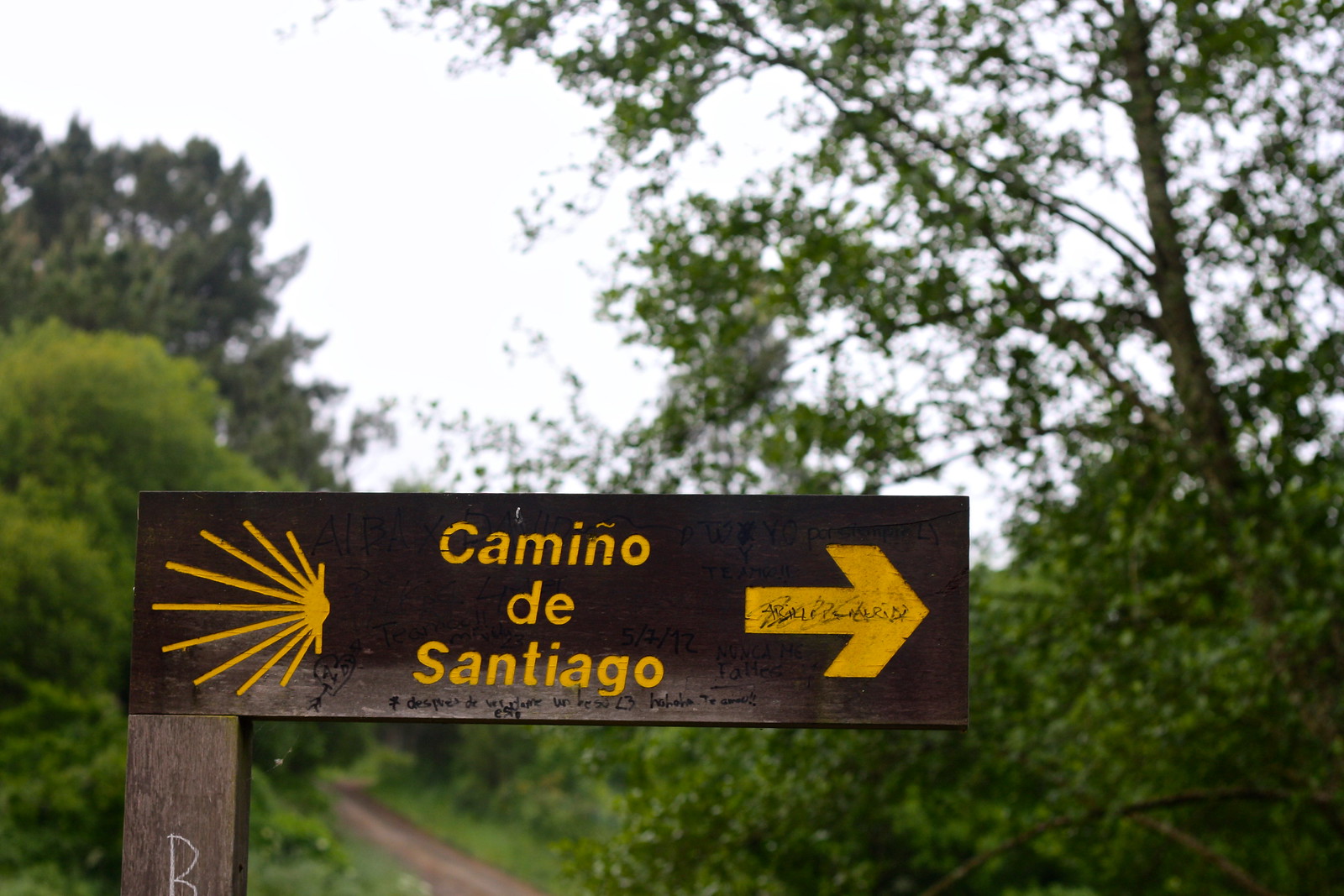 |
| Wooden signs used in Galicia |
Throughout the region of Galicia, but especially closer in toward Santiago, you find these wooden posts with the Galician spelling “Camiño de Santiago” painted in yellow.
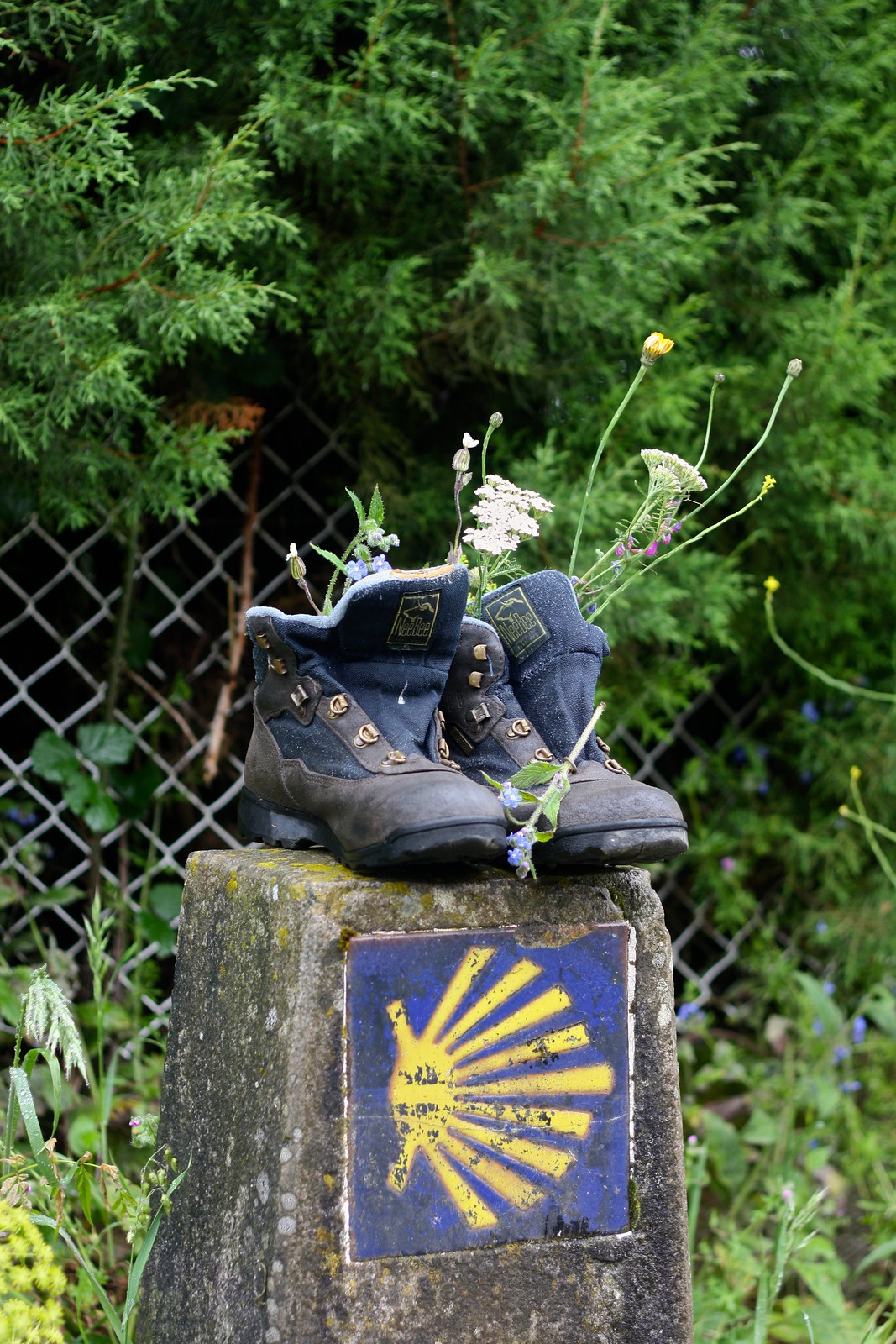 |
| Shoes |
Not more than an hour’s hike away from the cathedral, a pilgrim must have gotten so fed up with their hiking boots that they thought they would serve better as flower planters.
Camino catalán — The Catalan Way
 |
| Figueres |
Figueres in northeast Spain is famous as the birthplace of Spanish surrealist painter Salvador Dalí, and it also sees one trail of the Catalan Way run through it.
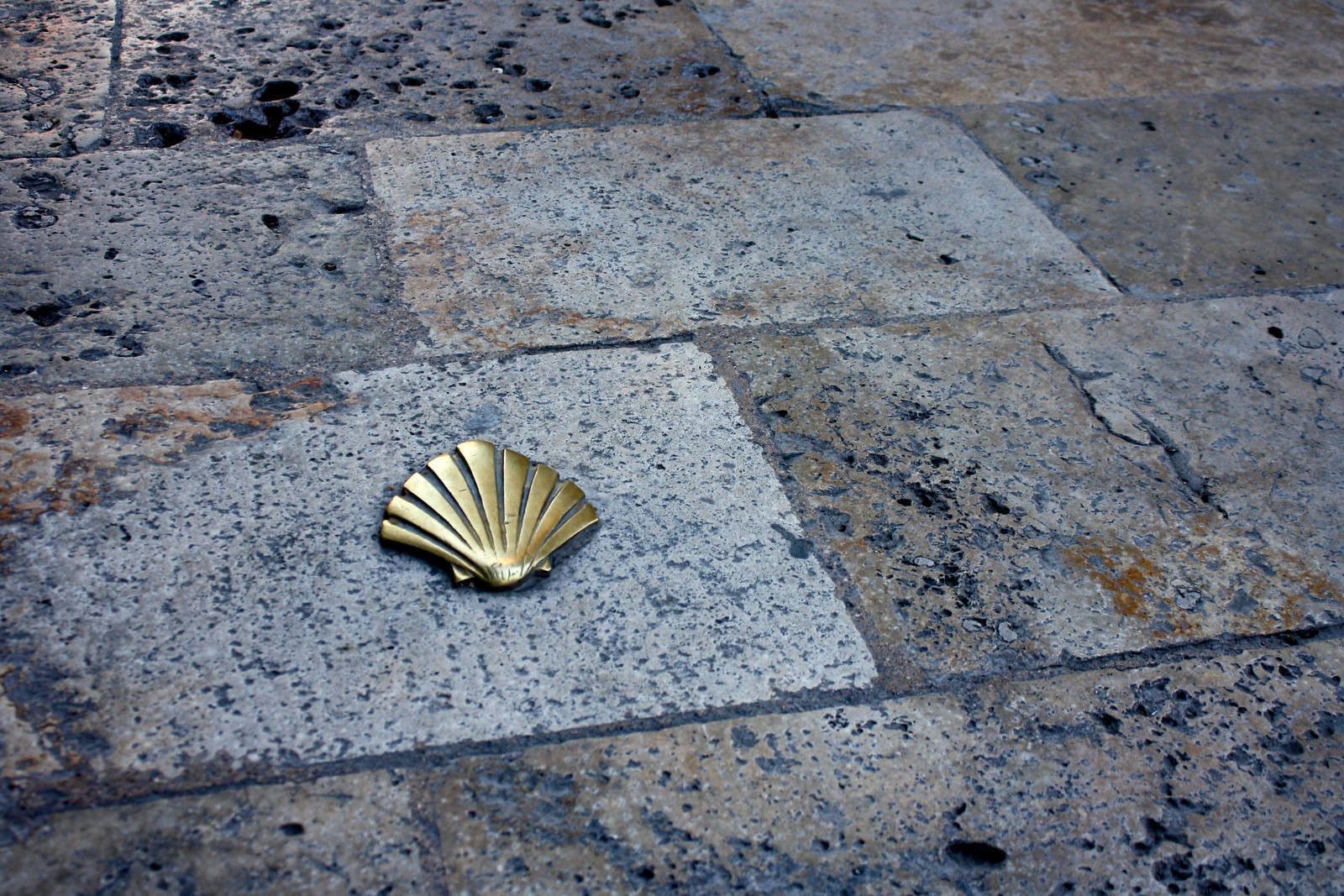 |
| Huesca |
There’s so many routes and side-routes of the Camino de Santiago that often you’ll be surprised to come across a Camino shell while exploring a new city, as I was when I visited the city of Huesca south of the Pyrenees.
Camino de Madrid — The Madrid Way
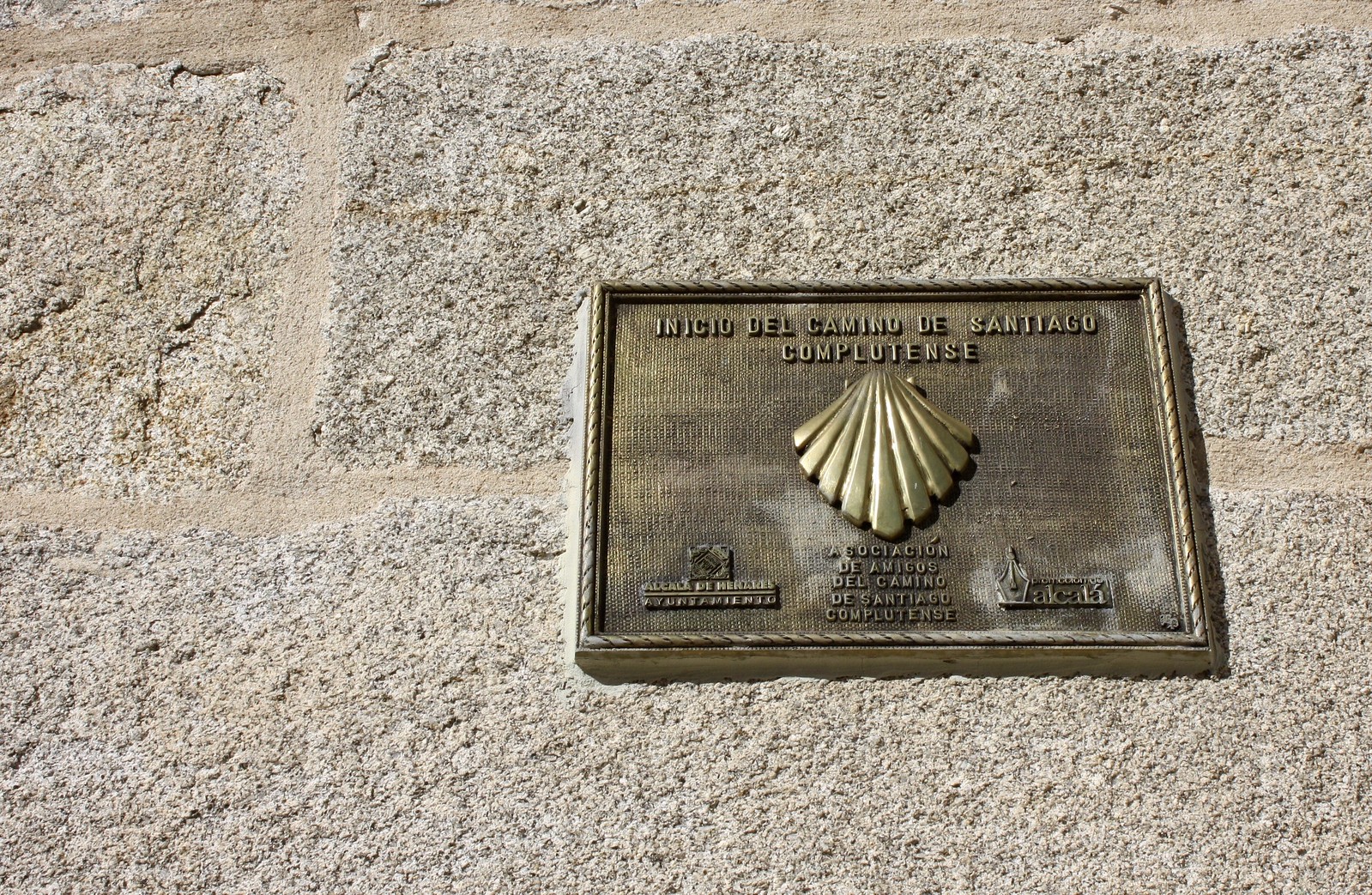 |
| Alcalá de Henares |
Even Madrid has its own Camino! And a sub-route starts out east in the town of Alcalá de Henares, the birthplace of Miguel de Cervantes of Don Quixote fame.
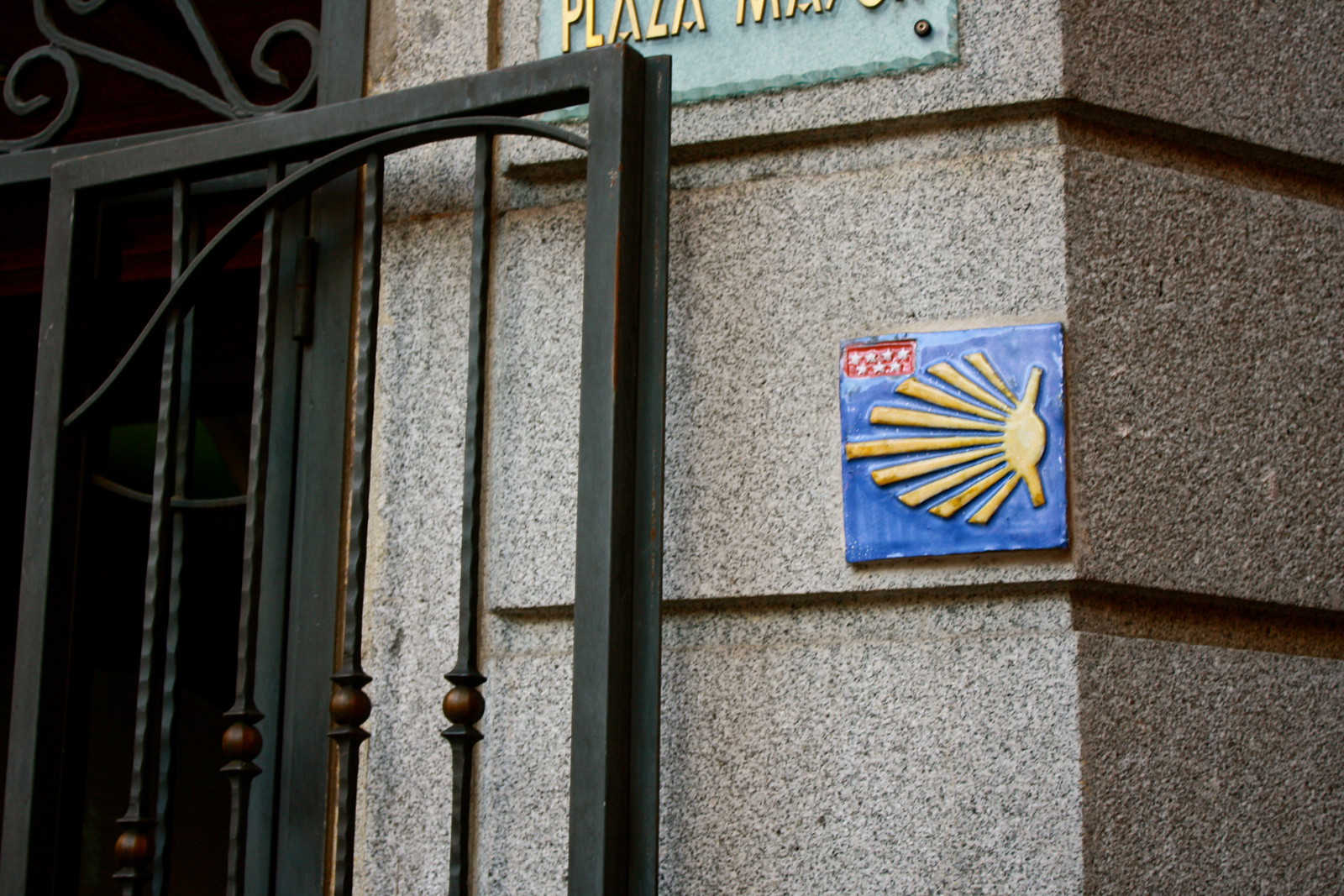 |
| Madrid |
I stumbled across this waymarker on the side of a snazzy hotel in central Madrid, but I have yet to ever come across a pilgrim in the Spanish capital.
Camino mozárabe — The Mozarabic Way
 |
| Granada |
“Mozarabic” is a historical term used to describe Christians in Moorish Spain who lived under Muslim rule, which lasted longer in the southern region of Andalucía than anywhere else. So it seems fitting that the various threads of the Camino that begin down here in the south bear this name. I found this ceramic waymarker on the side of a building in Granada, which was the last outpost of the Moorish kings and still the home of the most beautiful palace in the country, the Alhambra.
 |
| Jaén |
To the north of Granada is Jaén, capital of Spain’s most-productive olive oil region.
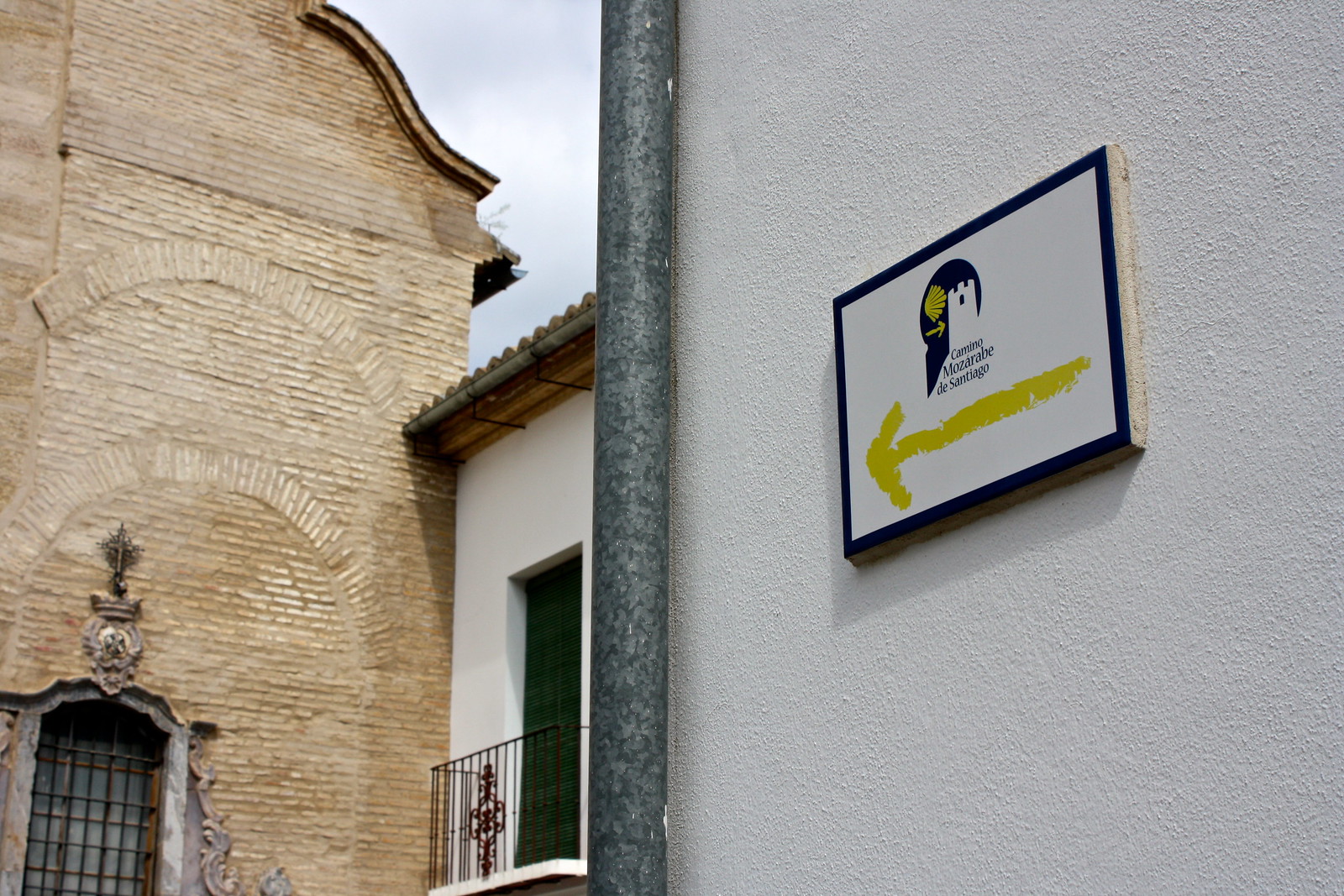 |
| Antequera |
Antequera’s a charming mid-sized town north of Málaga famous for molletes, spongy round bread rolls eaten at breakfast.
 |
| Córdoba |
Who could forget Córdoba, whose whitewashed old town feels more like a Moroccan medina and whose Mosque-Cathedral has been preserved in all its stunning beauty?
 |
| Mérida |
One branch of the Mozarabic Way even continues northwest to the region of Extremadura, where it ends in the capital city of Mérida, bestrewn with Roman ruins.
Vía de la Plata — The Paved Route
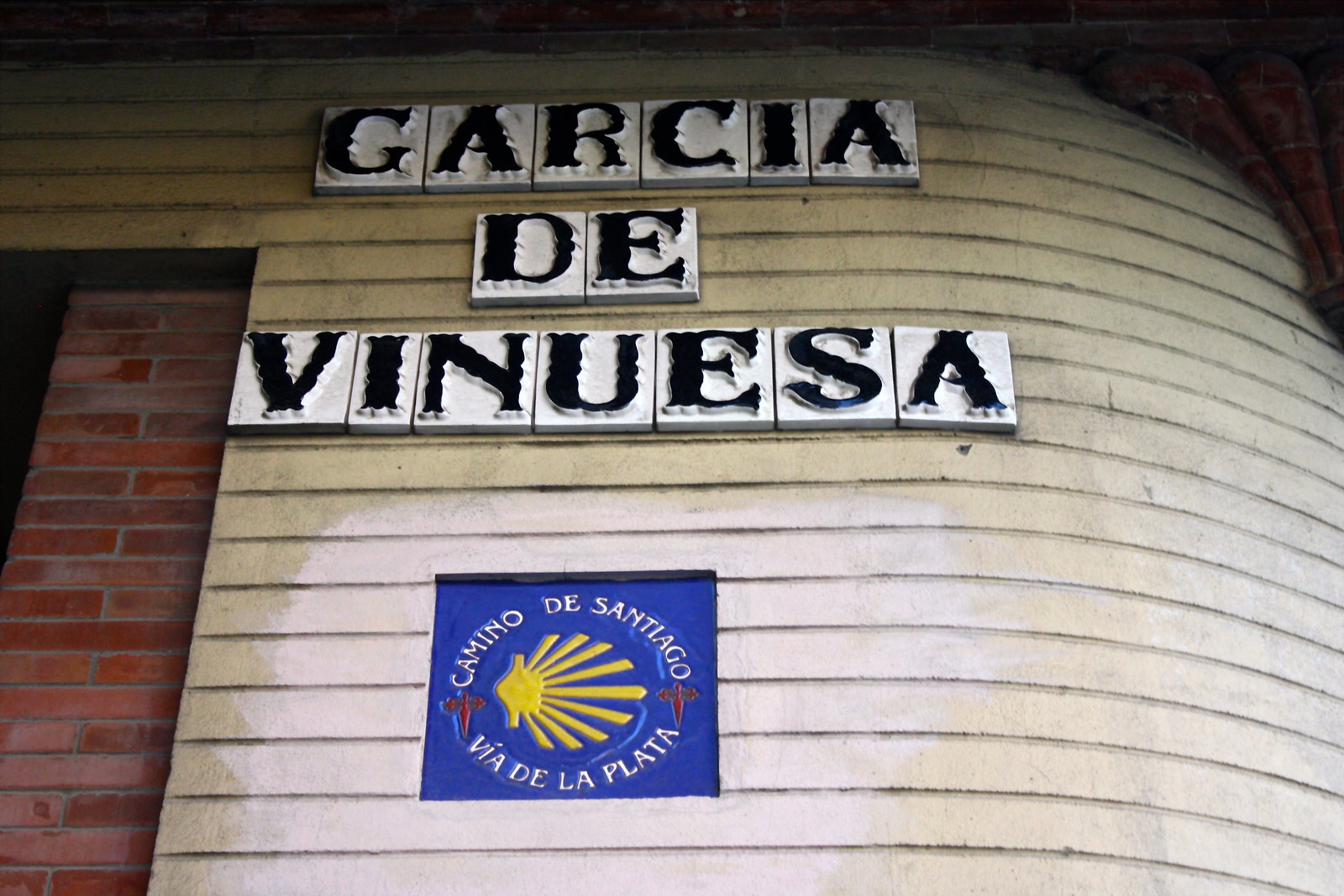 |
| Sevilla |
Often mis-translated as the “Silver Route,” this branch of the Camino actually comes from the Arabic word al-Bilat, meaning “paved,” in reference to the old Roman road that ran from Mérida (Emerita Augusta) north to Astorga (Asturica Augusta). The modern pilgrimage follows this 2,000-year-old trade route and starts in Sevilla, the Andalusian capital.
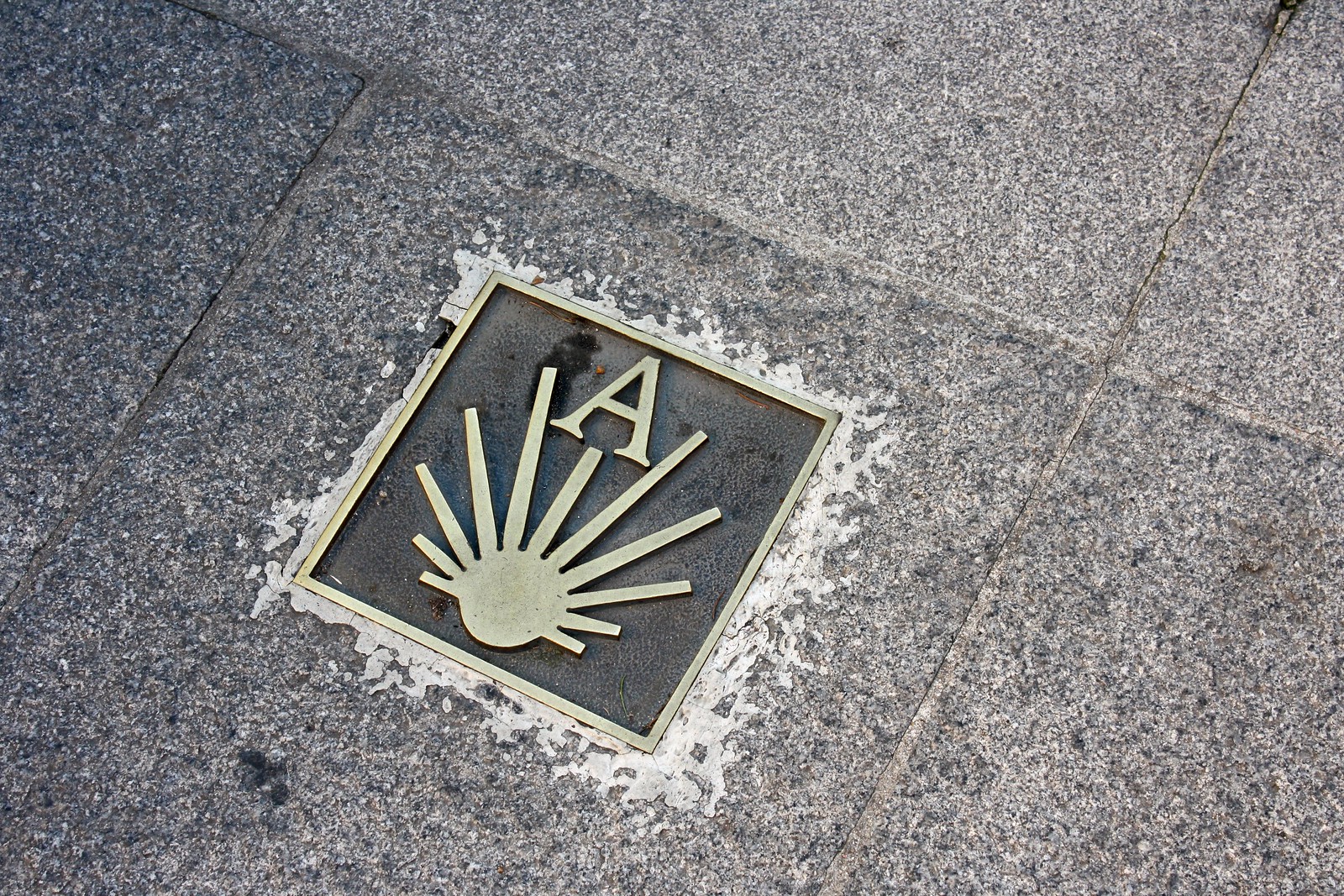 |
| Salamanca |
North of the region of Extremadura, the Paved Way enters Salamanca, where not one but two cathedrals soar over the river and where university students have ruled the roost for centuries.
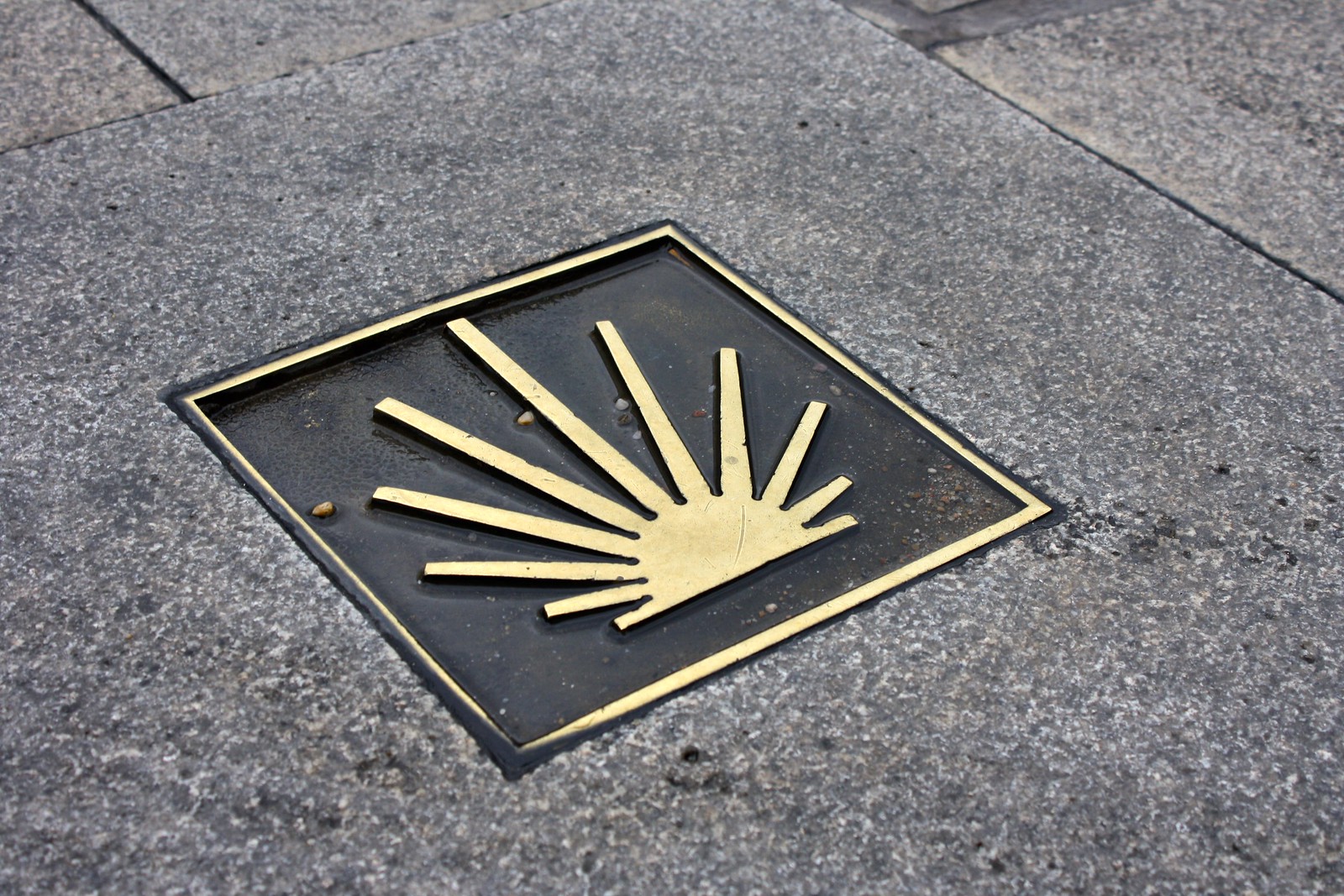 |
| Zamora |
Lesser-known Zamora, to the north of Salamanca, is a comfortable, authentic Spanish city and a great place to explore Romanesque architecture or observe Holy Week processions during Easter.
 |
| Ourense |
The Vía de la Plata continues into Galicia, making a grand entrance at Ourense as pilgrims cross the Miño River on a gigantic medieval arched bridge. Pilgrims can chill out here at thermal springs or chow down on boiled octopus.
Camino portugués — The Portuguese Way
 |
| Porto |
The Portuguese Way starts due south of Santiago in the capital of Portugal, Lisbon, and passes through the country’s second-biggest city, Porto.
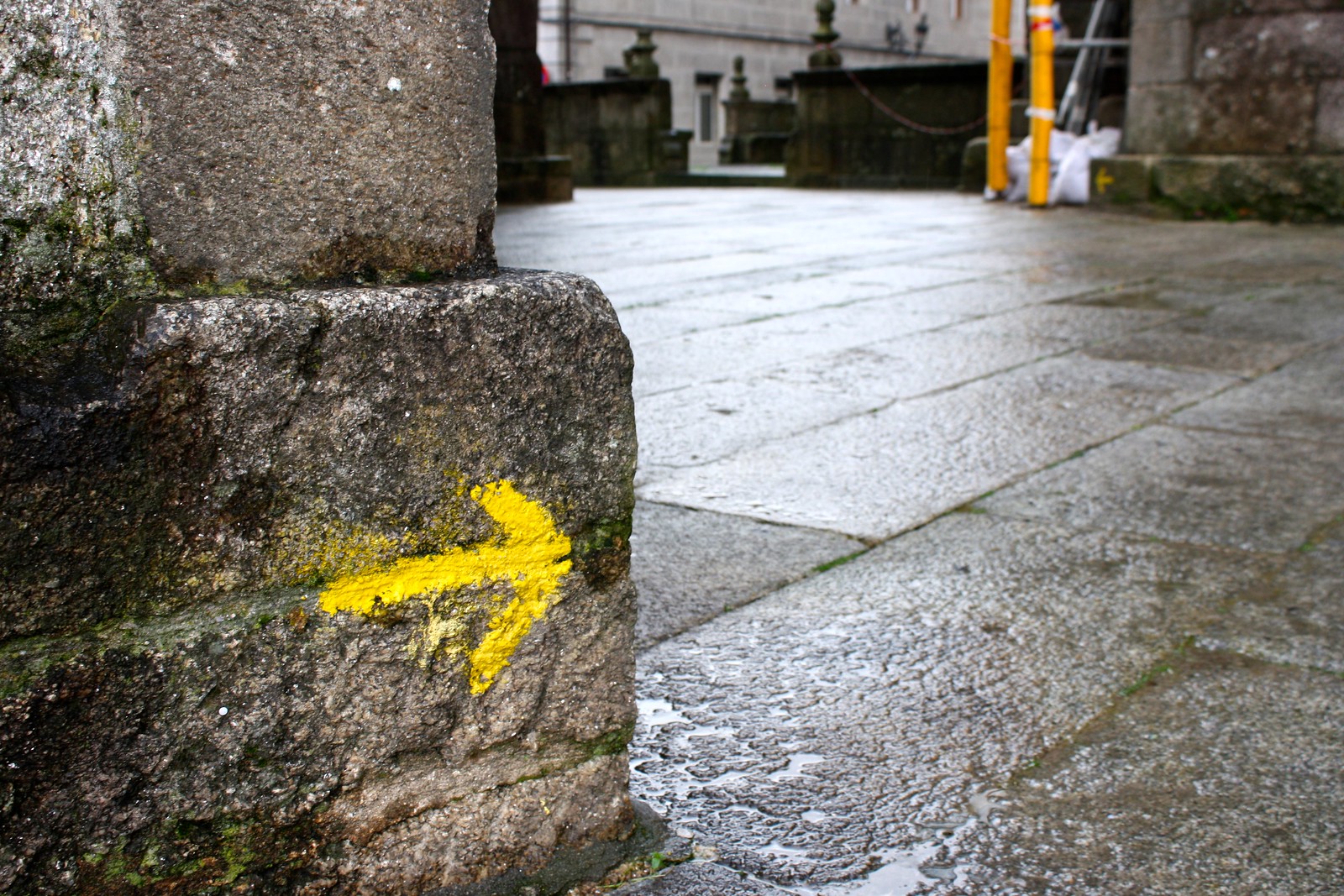 |
| Tui |
The Portuguese Way enters Spain via the village of Tui, perched on a hillside that overlooks the Miño River.
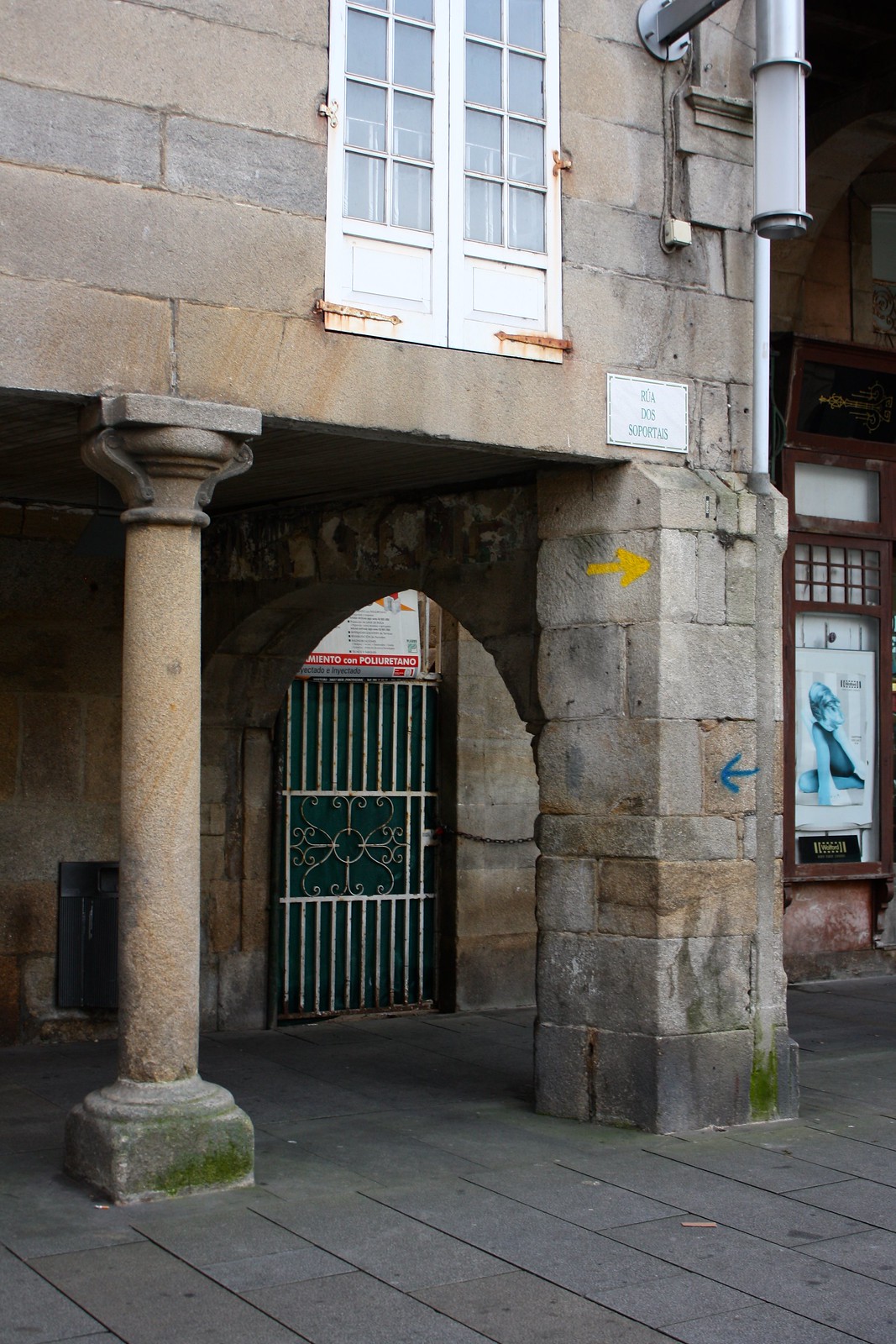 |
| Pontevedra |
Not far away is the provincial capital of Pontevedra, whose old town almost rivals Santiago de Compostela’s in gorgeous granite beauty.
 |
| Combarro |
There’s even a branch of the Camino in Combarro, a historic fishing village not far from Pontevedra.
 |
| Padrón |
The final stage of the Portuguese Way begins in the town of Padrón, known for its sometimes-spicy-sometimes-not peppers and several Galician poets.
Camino de Fisterra — The Way to Fisterra
 |
| Santiago de Compostela |
Although the Camino officially ends in Santiago de Compostela, the purported burial place of the Apostle St. James, many pilgrims just can’t stop walking and keep on marching west to the sea.
 |
| Fisterra |
This Camino de Fisterra ends at the lackluster fishing village of Fisterra, but the lighthouse at what the Romans believed was the “End of the World” is pretty cool.
 |
| Muxía |
And some pilgrims choose to make a loop out of the whole hike, heading north to the town of Muxía before circling back to Santiago.
Camino inglés — The English Way
 |
| Ferrol |
In the Middle Ages, pilgrims from England would ride a boat south from the British Isles and land at coastal towns on Galicia’s north Atlantic coast like A Coruña or Ferrol before heading south to Santiago. Ferrol’s got a bad reputation among Galicians (after all, dictator Francisco Franco was born here) but I love its the gridded historic old town and its impressive Holy Week processions.
 |
| Betanzos |
Most of the English Way passes through nondescript rolling countryside, but a highlight is Betanzos, one of Galicia’s finest villages with several Gothic churches and a reputation for serving up some of the best tortilla or Spanish potato omelet in the country.
Camino del norte — The Northern Way
 |
| Bilbao |
Hipster pilgrims eschew the popular French Way for the quieter and more challenging Northern Way that runs along Spain’s northern coast. This waymarker in the Basque city of Bilbao announces the Camino in Spanish and in the Basque language.
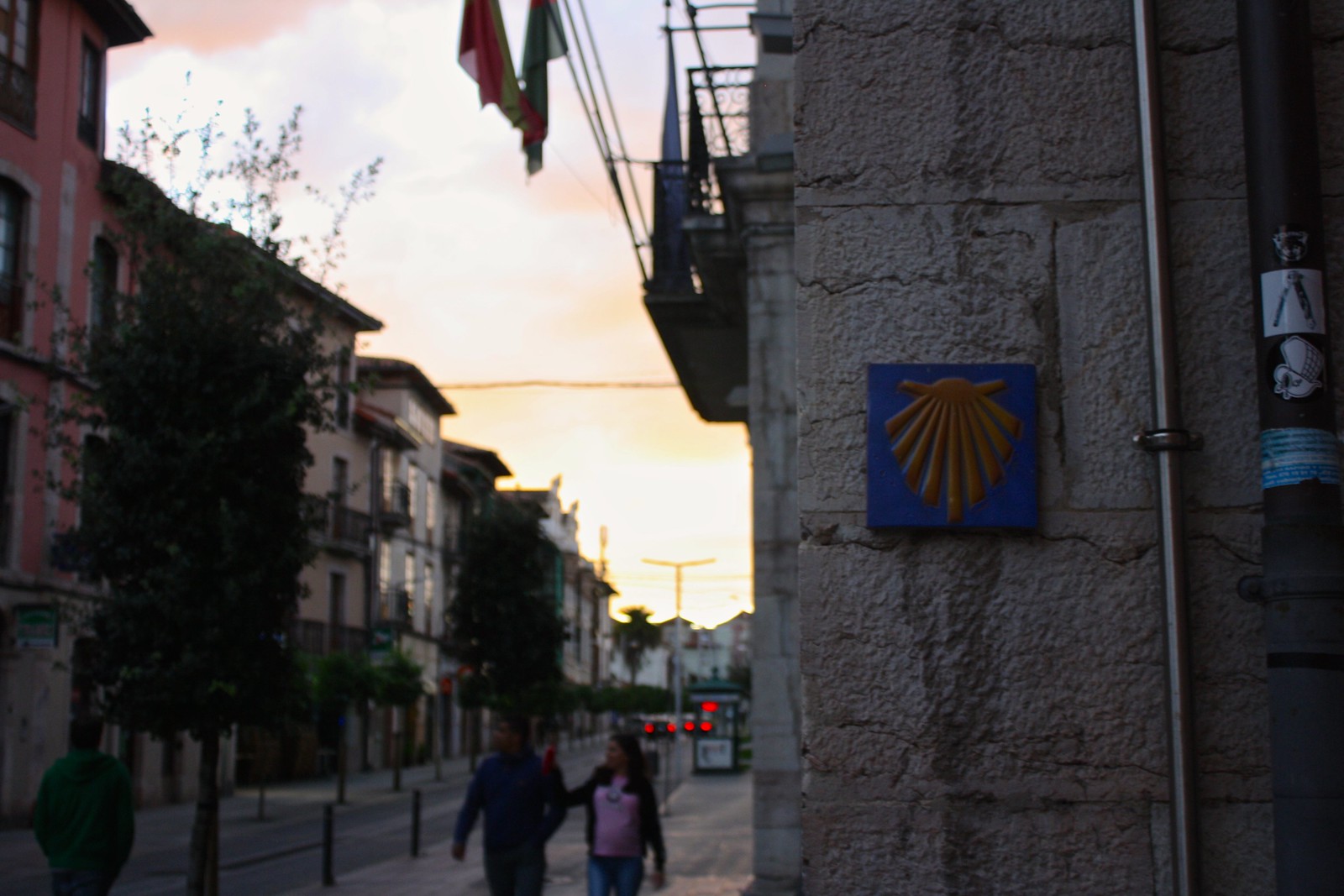 |
| Llanes |
Not only does the Northern Way take pilgrims past some of the most stunning scenery in the country, it also stops off in a plethora of top-notch towns, like Llanes on the eastern coast of Asturias.
Camino primitivo — The Original Way
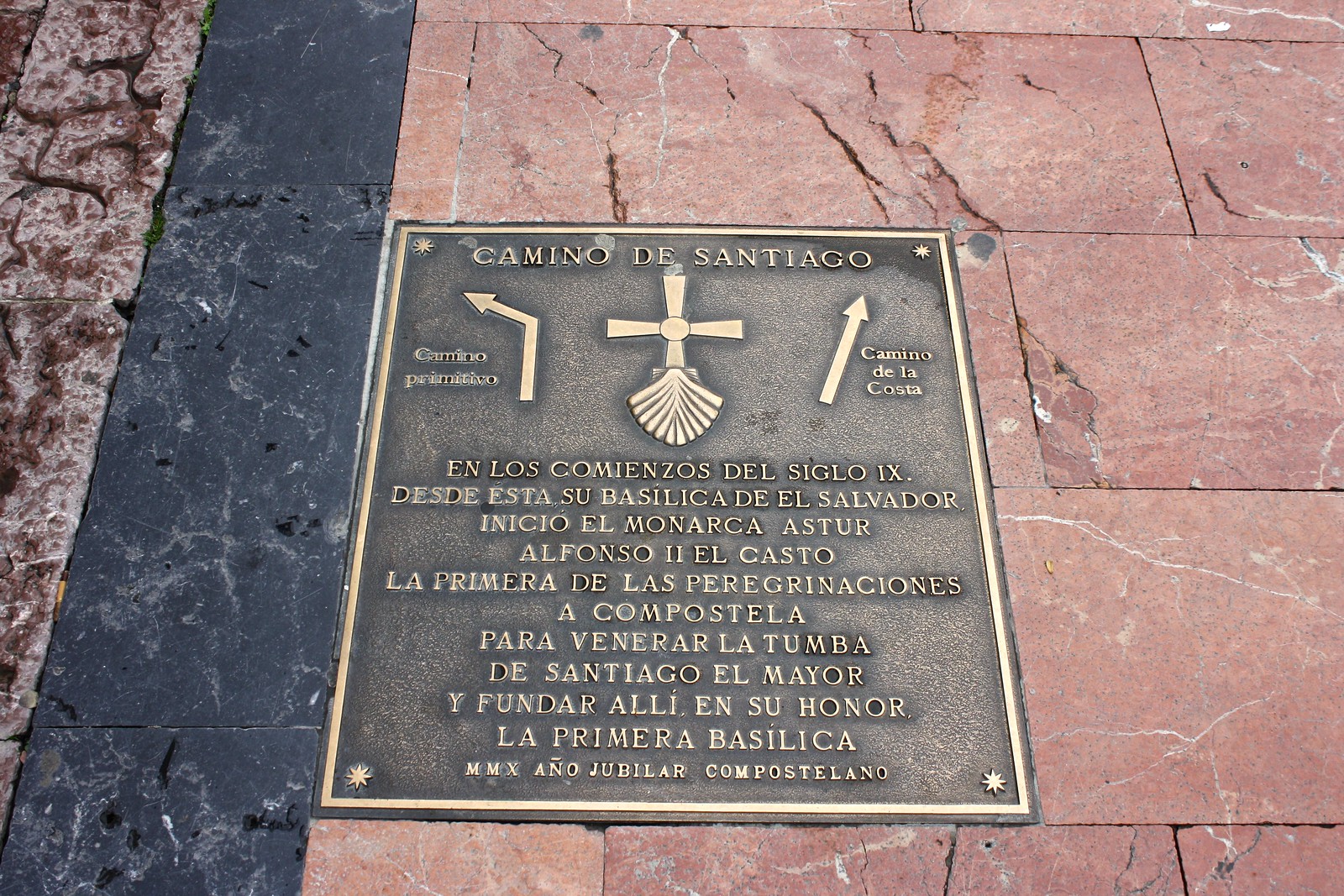 |
| Oviedo |
The Camino de Santiago began in the Dark Ages when the King of Asturias, Alfonso II, journeyed from the Asturian capital of Oviedo to honor the tomb of recently-discovered remains of the Apostle St. James. The Camino Primitivo retraces this “Original Way” the king took from Oviedo to Santiago.
 |
| Lugo |
The Original Way passes its halfway point a little before reaching Lugo, whose old town is still completely surrounded by its slate stone walls from Roman times.
Chemin de Saint-Jacques — The Way of St. James in France
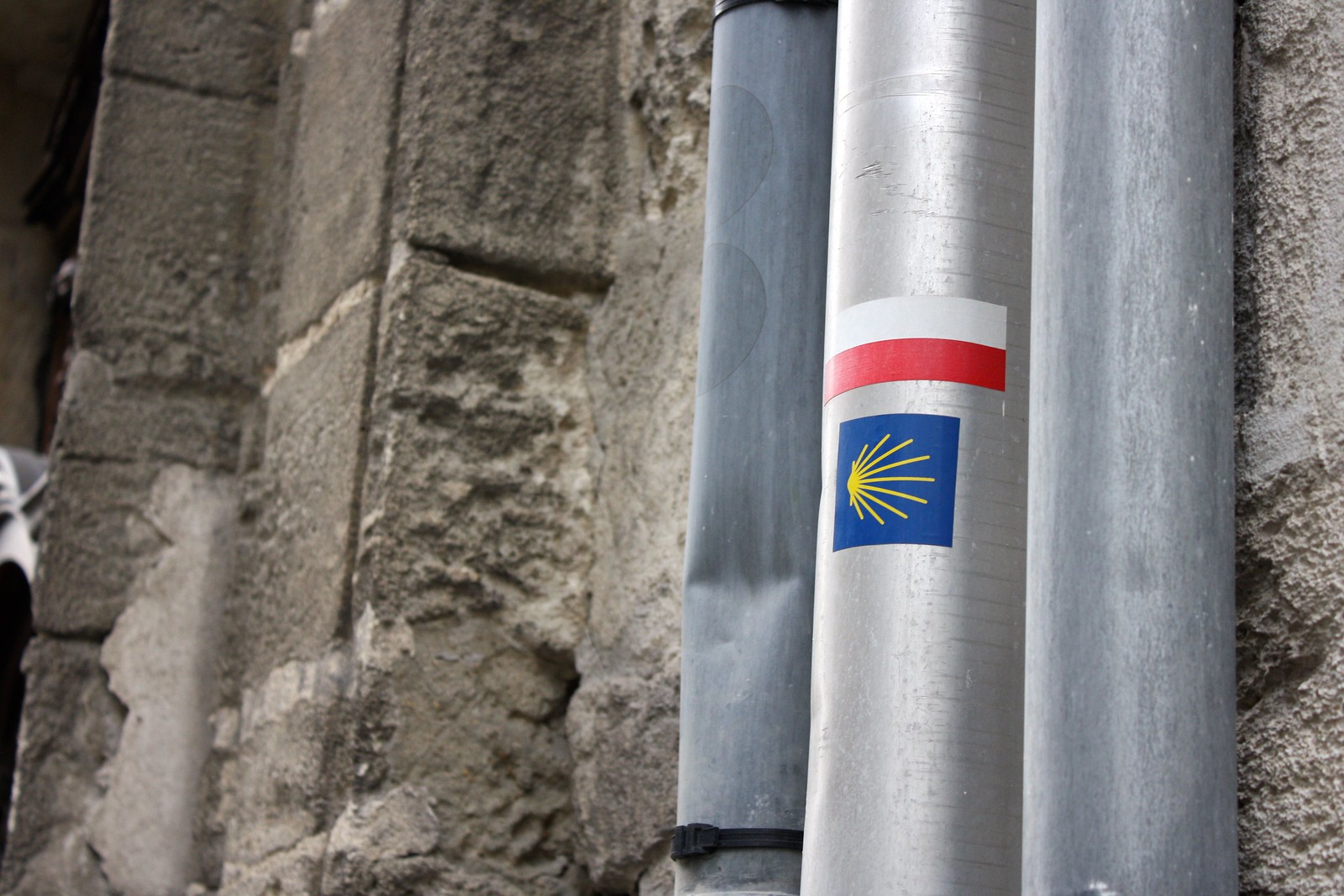 |
| Villeneuve-lès-Avignon |
But the Camino de Santiago phenomenon isn’t limited just to Spain. Plenty of routes start in southern France and cross the Pyrenees Mountains to join up with Spanish trails. I snapped this photo when I was hanging out in Avignon.
Jakobsweg — The Way of St. James in Germany
 |
| Cologne |
Some very brave pilgrims even hike all the way to Santiago from central Europe—I found this waymarker in Cologne, a major city in eastern Germany.
Have you hiked any of these many Ways of St. James before? Do you keep an eye out for shell markers for the Camino while traveling around Spain and Europe like I do? Comment below in the discussion thread!

